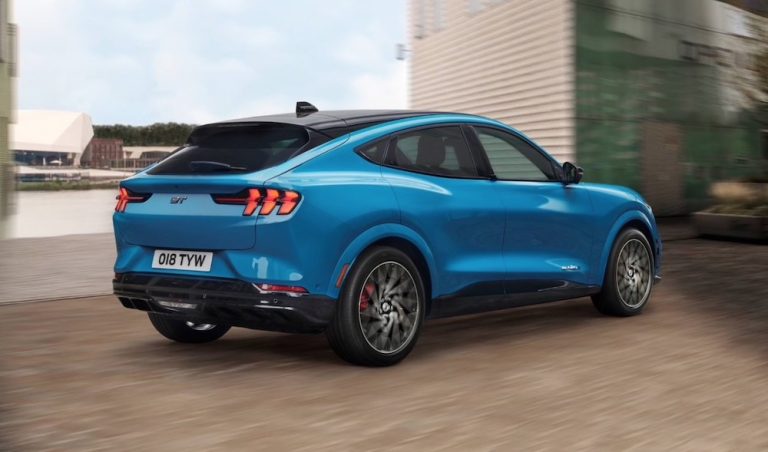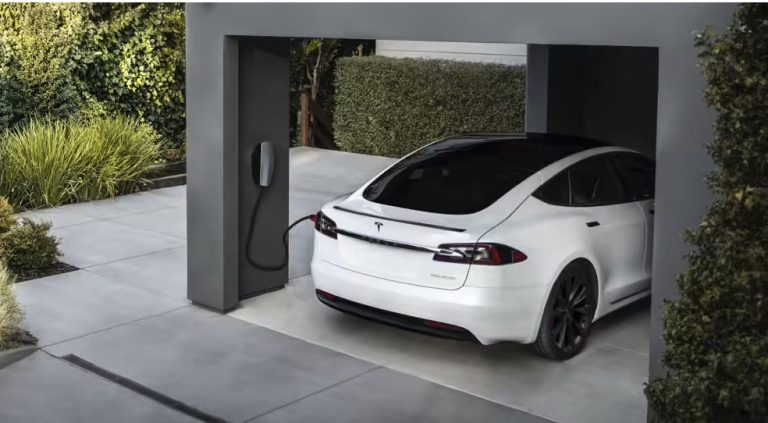Electric Cars: The Basics
For those of you new to zero-emission electric driving, we recommend a read of the following articles:
Sign up to the e-zoomed Electric Living newsletter
Range Rover Evoque PHEV SUV
Land Rover is an iconic British brand, famed globally for its off-road and four-wheel drive vehicles. Land Rover is owned by Jaguar Land Rover (JLR) Automotive PLC, a leading luxury vehicle manufacturer with a distinctive reputation of being British and iconic.
However the automotive company is now owned by the leading Indian industrial conglomerate, the Tata Group. The blue chip, India headquartered company is a leading player in the automotive sector via its Tata Motors subsidiary based in Mumbai. Tata acquired Jaguar and Land Rover from Ford Motor Company in 2008. JLR continues to conduct its operations from Coventry in the United Kingdom.
Range Rover electric vehicles (EVs) include:
- Range Rover Evoque PHEV
- Range Rover PHEV
- Range Rover Velar PHEV
- Range Rover Sport PHEV
The Land Rover Range Rover Evoque (simply known as Range Rover Evoque) concept luxury SUV was unveiled in 2008. The first-generation Evoque was manufactured from 2011. The second-generation Evoque commenced production in 2018. The SUV is now also available as a mild hybrid electric vehicle (MHEV) and a plug-in electric vehicle (PHEV). Land Rover has yet to announce a date for the release of the pure electric Range Rover Evoque.
For those keen on a premium-badge luxurious SUV, but prefer a compact size, the Range Rover Evoque has always been an attractive option to consider. However, with the addition of a plug-in hybrid variant, the Evoque has become even more compelling, given the enhanced environmental credentials and economy of driving a plug-in electric car.
The Range Rover Evoque P300e all-wheel drive PHEV pairs a 1.5-litre (3-cylinder) petrol combustion engine with an electric motor. The 8-speed automatic PHEV has a claimed fuel economy up to 1.4 l/100 km and reduced tailpipe emissions (35g CO2/km), compared to the conventional internal combustion engine variant (207g CO2/km).
Of course, the real-world fuel economy will depend on a number of factors, but none as influential as using the e-mode. Bottom-line, to increase the fuel economy of the electric vehicle and lower the driving costs, the PHEV should be driven as much as possible on the pure electric mode.
It is also far cheaper to drive on electric mode, compared to using the combustion engine. Depending on the cost of charging, driving on e-mode will cost between 5 cents and 10 cents per km. Moreover, on EV mode the drive is more refined and the cabin quieter.
Given the WLTP certified emission-free range is 62 km, and most commutes are short, there is much scope for taking advantage of electric driving to save money. The PHEV has a 15 kWh onboard EV battery, which is reasonably standard for a PHEV of this size. However, expect the real-world electric range to be closer to 50 km. The EV range is impacted by a number of factors, to include: driving profile, speed, load, regenerative braking, road condition, weather, wheel size and a lot more.
The EV is capable of DC charging up to 32 kW (0%-80%: 30 minutes). Do keep in mind that most PHEVs are not capable of DC rapid charging. Charging the EV using a single-phase EV charger will take just over two hours. Of course, if you top up on a regular basis, the charging time will be faster. The EV incorporates a 7 kW AC onboard charger. Land Rover offers a warranty up to 6 years or 100,000 km.
The performance of the all-wheel drive electric SUV is good, despite the additional weight of the onboard EV battery. The Range Rover Evoque P300e PHEV can achieve 0-100 km/h in 6.1 seconds, with a top speed up to 213 km/h. The drivetrain delivers a maximum power of 309 HP (torque 540 Nm), sufficient for city and motorway driving.
From a practical perspective, the compact size of this premium SUV does make it easier to manoeuvre and park, compared to the larger Range Rover SUVs. However, the sloping roofline of the Evoque plug-in hybrid electric SUV does impact the headroom for the rear seat passengers and also the rear-view visibility for the driver. Despite the placement of the onboard EV battery, the Evoque PHEV offers decent boot space (472 L).
Given the price tag, the manufacturer does not disappoint in regards to the quality of the interior and standard specifications on offer. Some of these include: Pivi Pro with connected navigation, wireless device charging, Apple CarPlay, Android Auto, lane keep assist, traffic sign recognition and adaptive speed limiter, rear camera, pedestrian airbag and deployable bonnet and more. The electric vehicle (EV) has been awarded a Five Stars NCAP safety rating.
Bottom-line, electric driving is good for the environment and the wallet!
| PROS | CONS |
|---|---|
| Refined and high quality interiors | Expensive compared to other PHEVs |
| DC charging capability | EV battery capacity small and limited electric range |
| Running on electric mode is cheap | Rear headroom impacted by roofline |
Range Rover Evoque Plug-In Hybrid SUV (credit: Land Rover)
| At A Glance | |
|---|---|
| EV Type: | Plug-In Hybrid Electric Vehicle (PHEV) |
| Body Type: | SUV |
| Engine: | Petrol/ Electric |
| Available In Ireland: | Yes |
| Variants (4 Options) |
|---|
| Range Rover Evoque (from € 71,567) |
| Range Rover Evoque R-Dynamic (from € 68,762) |
| Range Rover Evoque Autobiography (from € 87,874) |
| Range Rover Evoque Bronze Collection (from € 70,786) |
| EV Battery & Emissions | |
|---|---|
| EV Battery Type: | Lithium-ion |
| EV Battery Capacity: | Available in one battery size: 15 kWh |
| Charging: | 32 kW DC charging (10%-80%: 30 minutes). Onboard charger: 7 kW AC (0%-100%: 2 hrs 12 mins) |
| Charge Port: | Type 2 |
| EV Cable Type: | Type 2 |
| Tailpipe Emissions: | 35 – 32g (CO2/km) |
| Battery Warranty: | 6 years or 100,000 km |
| Average Cost Of Residential Charging | |
|---|---|
| Battery net capacity : 8.8 kWh | € 2.10 |
| Battery net capacity : 11.6 kWh | € 2.78 |
| Battery net capacity : 12.0 kWh | € 2.87 |
| Battery net capacity : 13.10 kWh | € 3.14 |
| Battery net capacity : 14.10 kWh | € 3.37 |
- Note 1: The average cost of residential electricity in Ireland varies depending on the region, supplier and type of energy used. An average for Ireland is 23.97 cents/kWh.
- Note 2: Not all EV manufactures make available the data on net EV battery capacity, and in a number of instances the EV battery capacity advertised, does not state if it is gross or net capacity. In general, usable EV battery capacity is between 85% to 95% of the gross available capacity.
| Charging Times (Overview) | |
|---|---|
| Slow charging AC (3 kW – 3.6 kW): | 6 – 12 hours (dependent on size of EV battery & SOC) |
| Fast charging AC (7 kW – 22 kW): | 3 – 8 hours (dependent on size of EV battery & SoC) |
| Rapid charging AC (43 kW): | 0-80%: 20 mins to 60 mins (dependent on size of EV battery & SoC) |
- Note 1: SoC: state-of-charge
| Dimensions | |
|---|---|
| Height (mm): | 1649 |
| Width (mm): | 2100 |
| Length (mm): | 4371 |
| Wheelbase (mm): | 2681 |
| Turning Circle (m): | 11.9 |
| Boot Space (L): | 472 |
| P300e PHEV | |
|---|---|
| EV Battery Capacity: | 15 kWh |
| Pure Electric Range (WLTP): | 62 km |
| Electric Energy Consumption (Wh/km): | 209.6 |
| Fuel Consumption (l/100 km): | 1.4 – 1.6 |
| Charging: | 32 kW DC charging (10%-80%: 30 minutes). Onboard charger: 7 kW AC (0%-100%: 2 hrs 12 mins) |
| Top Speed: | 213 km/h |
| 0-100 km/h: | 6.1 seconds |
| Drive: | All-wheel drive (AWD) |
| Electric Motor (kW): | N/A |
| Max Power (HP): | 309 |
| Torque (Nm): | 540 |
| Transmission: | Automatic |
| Seats: | 5 |
| Doors: | 5 |
| Unladen Weight-EU (kg): | 2,157 |
| Colours: | 11 |
| NCAP Safety Rating: | Five-Star |
Electric Vehicles (EVs): Jargons
There is no doubt, in that, for those new to electric driving, the terminology can be both daunting and confusing. We have chosen a few jargons to help you get more familiar with electric vehicles (EVs)! We also recommend reading our article ‘Electric Car Jargon Buster‘ for a more comprehensive list of terms.
| Glossary: Electric Vehicles (EVs) | |
|---|---|
| Alternating Current (AC): | What is alternating current? Though we may not be familiar with this term, we use alternating current everyday in our homes to power our appliances! Alternating current is a type of electric current, in which the direction of the flow of ‘electrons’ switches back and forth at regular intervals or cycles. When an electric car is charged at home, the type of electric current used, is alternating current. |
| Direct Current (DC): | What is direct current? Direct current (DC) is a type of electric current that flows in only one direction i.e. uni-directional. DC enables the constant flow of electrons from an area of high electron density to an area of low electron density. DC is quite common in our day-to-day lives. Many of the appliances we use on a regular basis that are operated by batteries, use DC. A mobile phone, a laptop, a torch light etc. In electric cars, the onboard EV battery also uses direct current to store energy. |
| Internal Combustion Engine Vehicle (ICEV): | What is an internal combustion engine car? Put simply, conventional petrol and diesel vehicles are powered by an internal combustion engine (ICE). These vehicles ‘combust’ fuel with the help of an oxidizer (typically oxygen from the air). These vehicles mostly use fossil fuels, like petrol, diesel, jet fuel etc. These vehicles are characterised by high tailpipe emissions, which pollute the local air. |
| One-Pedal Driving: | What is one-pedal driving? In one-pedal driving, the EV slows down or stops, when the pedal is released. One-pedal functionality reduce the need to use the brake pedal, for speed reduction or stopping. Of course, the brake pedal is still the best way to hold a vehicle in place at a complete stop. |
| Smart EV Charger: | What is a smart EV charger? A smart or ‘intelligent’ electric car charger, is a type of EV charger that enables smart functionality, to include, more control by the user, and communication between the EV charging station, the operator, the utility and the national grid. |
While e-zoomed uses reasonable efforts to provide accurate and up-to-date information, some of the information provided is gathered from third parties and has not been independently verified by e-zoomed. While the information from the third party sources is believed to be reliable, no warranty, express or implied, is made by e-zoomed regarding the accuracy, adequacy, completeness, legality, reliability or usefulness of any information. This disclaimer applies to both isolated and aggregate uses of this information.




























